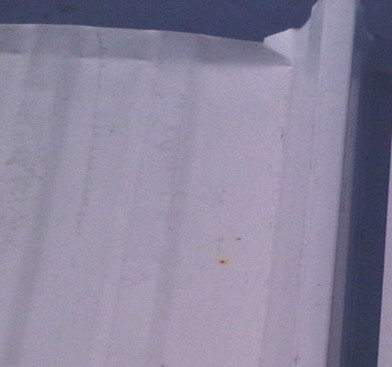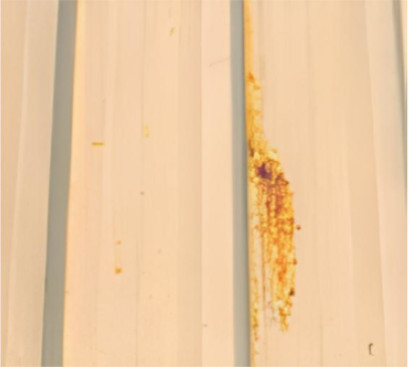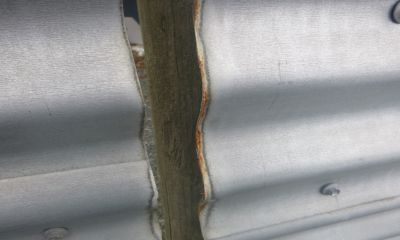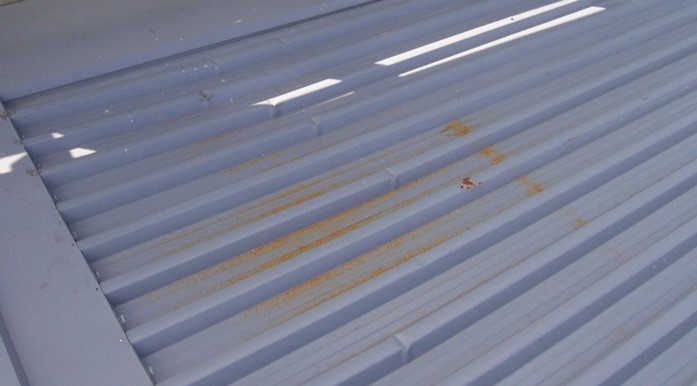Swarf is the term given to steel debris caused by cutting or piercing a metal sheet or adjacent metal surfaces.
When cutting steel, any swarf remaining on the sheet starts corroding quickly and causes stains. These stains are often mistaken for early deterioration of the cladding.
To some degree, swarf will normally be evident at the completion of any roof cladding job. The acceptability of swarf depends on how it got there, whether techniques have been applied to minimize it, and the visual exposure of the cladding.
4.14A Light Scattered Swarf
Swarf created by acceptable means of cutting — i.e., power drills, self-drilling screws and shears — will be either loose or lightly adhered to the surface film of painted or unpainted sheets. Most swarf can be removed by daily hosing, sweeping, or blowing which should be done at the end of each day and at the completion of the job. Avoid blowing loose swarf under adjacent cover flashings.
Any remaining swarf will not be in contact with the metallic substrate and will not cause deterioration of the roof, its effect is aesthetic only. Overly aggressive efforts to remove such swarf is likely to damage the appearance of the cladding without enhancing its durability
On highly visible surfaces, a soft rag and plastic spatula can be used to remove more tenacious swarf adhesions or a diluted mild household cleaner might work on painted surfaces. Wire brushing, steel wool, or pot scouring cloths must not be used as they will damage the organic or metallic coating.
Bulletin available: BSCE01 Cut Edge Treatment:
Extract:
"...provided pre-painted materials are cut by approved methods, it is not necessary, nor is it
recommended by manufacturers, to treat any site-cut ends."
Swarf created by unacceptable practices, such as the use of grinders and friction power blades on, or adjacent to the cladding, is often hotter in contact with the cladding. The heat may cause it to embed deeply in the organic film and be in contact with the protective metallic substrate.
Friction cutting that creates swarf can also cause heat damage to metallic and organic protective surfaces.
This can severely affect the substrate; removal is difficult or impossible to achieve without mechanically damaging the decorative and/or protective coatings.
Swarf is not the only problem that cutting with friction blades can create. Such blades will often produce excessive heat at the cutting edge, which will degrade the organic and metallic coatings.
Often roof damage is caused by sub-trades accessing the roof after installation. Roofers and other trades must be aware of how they treat the material they are working on and the effect it may have on adjacent surfaces.
Where work is done above or adjacent to an installed roof surface, or where the roof is used as a work platform for subsequent work, the main contractor must ensure the existing roof remains undamaged.
This roof shows evidence of mechanical damage to the coating, rib traffic damage to adjacent ribs within a purlin span, and excessive swarf by unacceptable cutting practices. In this case, the only logical remedy was replacement.




